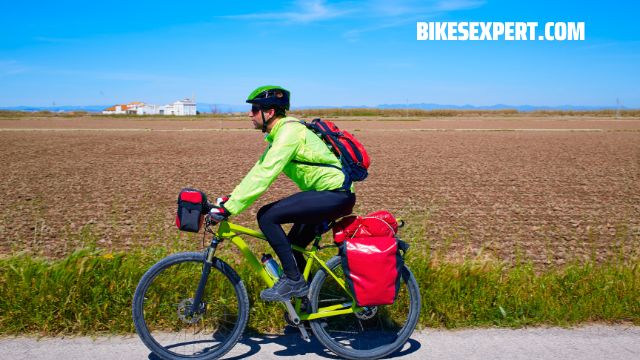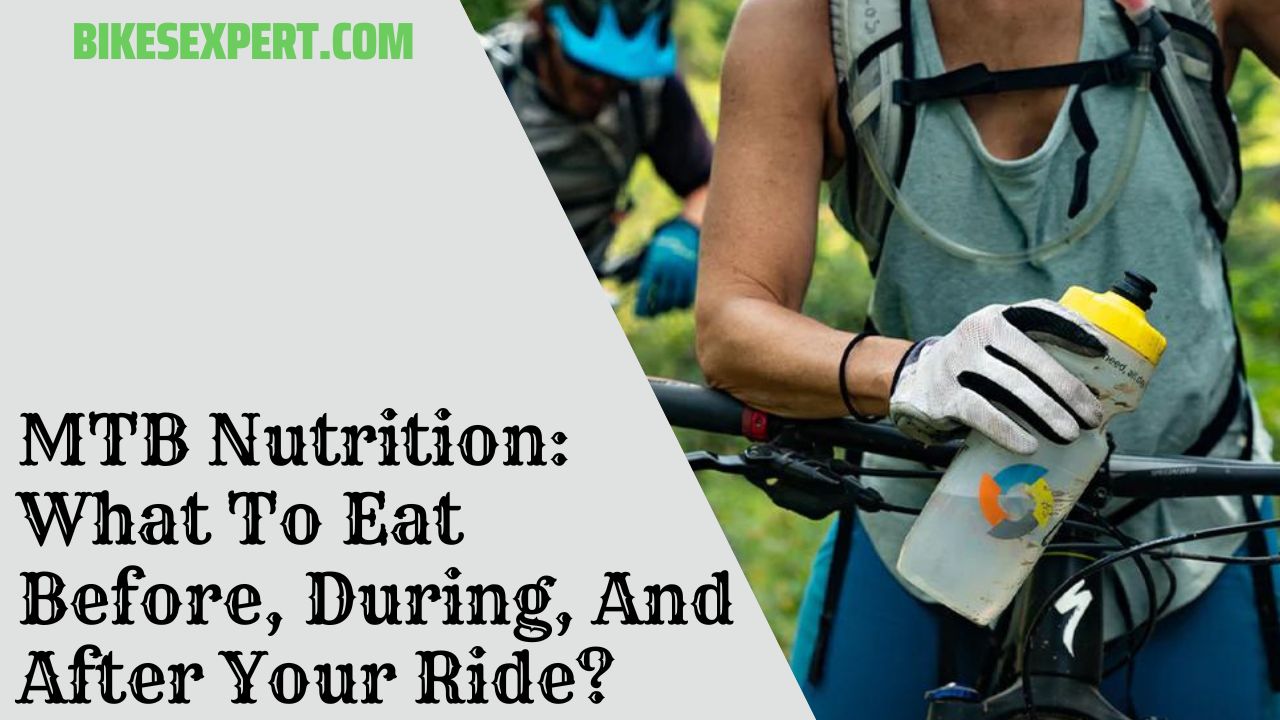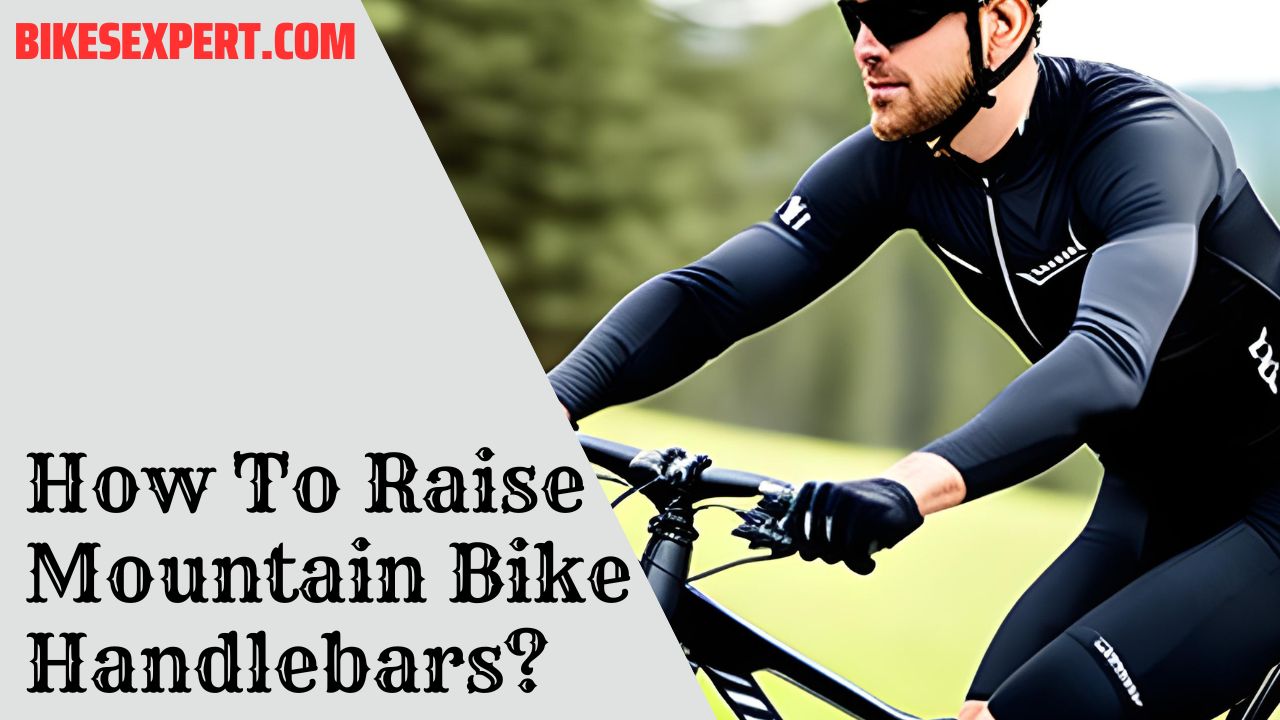If you’re an avid mountain biker, you know a good ride is fueling your body with the right nutrients. And what better way to fuel your body than with food?
Cyclists need a diet that gives them enough energy to enjoy their rides. The best way to ensure a cyclist’s body performs and repairs well is to ensure it is nourished with the right amount of
- Protein,
- Vitamins, and
- Minerals.
In this blog post, I’ll discuss What to eat before, during, and after your ride. I’ll cover everything from breakfast to post-ride snacks so that you can make sure you’re getting the most out of your time on the trails.
Learn More: Can You Ride A Mountain Bike On A Road? Important!.
What Do You Eat Before The Ride?

Endurance athletes have been carb-loading for years, if not decades. A carb-load improves performance and stamina during long workouts. It would help if you ate a carb-dense meal the night before a long-distance bike ride to ensure your body is fueled.
It is recommended to consume 7 to 12 grams of carbohydrates for every kilogram of body mass for 24 hours before cycling short sessions of less than 1.5 hours. Eat these carbohydrate-rich foods the night before your ride:
- Quinoa
- Oatmeal
- Whole grain rice
- Sweet potato
According to experts, protein and fats have a marginal effect on energy levels compared to carb-loading. But that doesn’t mean you shouldn’t have a serving of each before riding. Eggs, fish, and nuts are excellent protein sources, while avocado, coconut oil, and yogurt are excellent sources of healthy fats.
What Do You Eat During The Ride?

Some cyclists ignore the importance of carbs during a ride. It’s not possible to bring pasta with you. It would help if you did not think about pasta regarding carbohydrates. Cycling requires quick-release carbs instead.
You will need different amounts of carbohydrates depending on how long your workout lasts. For workouts lasting 30 minutes to an hour, carb intake should be no less than 90 grams instead of 30 grams.
For a quick energy boost during your ride, like carbohydrate gels and carb-rich mouthwashes. Although these solutions can be useful for short-distance travel, they are not for long-distance travel. You should stuff these quick-release carbohydrate snacks into your mesh pockets if you are an endurance cyclist:
- Carbohydrate-rich bananas
- High-fat, high-protein, and high-carb trail mix
- Protein-rich, carb-rich, and healthy fats-rich peanut butter and jelly sandwiches
- Cubes of cheese (high in protein and healthy fats)
Energy bars are another great snack for cyclists. When it comes to gluten-free cycling snacks, Larabar is a great choice. Alternatively, you can make your cycling energy bars with the right carbs, fats, and protein balance.
What To Eat After The Finish Line?

After you cross the finish line, cycling nutrition doesn’t end. Eating the right foods after your workout reduces the likelihood of injury, speeds up muscle recovery, and restores nutrients quickly.
After cycling, consume a carbohydrate- and protein-rich meal. You should consume carbohydrates immediately after the ride if you plan to exercise again in 8 hours or less. After cycling, consume 1 to 2 grams of carbs per kilogram of your weight every hour for the next 4 hours.
To aid muscle recovery after cycling, add protein to your diet. Protein can be consumed after your recovery period. For optimal muscle recovery, consume at least 20 grams of protein within three hours after riding your bike.
What Are The Best Meals For A Ride?
Before riding an MTB bike, consider eating a healthy and nutritious meal, such as a salad. While it does provide some carbohydrates, it is far from sufficient and hard to digest all that fiber.
Toast With Eggs
For long rides or if you have time to fuel up before a morning ride, toast with eggs is a great pre-mtb bike snack. Bread, particularly whole-wheat toast, contains carbohydrates that break down quickly but linger for a long time, while eggs have protein that breaks down slowly and helps avoid muscle injury.
Bananas
Avoid consuming bananas more than half an hour before your ride. These drinks have a high glycemic index, so they break down rapidly into simple sugars that your muscles can use.
It may help to avoid cramps if you eat a banana as it contains potassium and vitamin C. However, bananas rarely provide enough energy for the entire journey.
Muffin
Another great pre-ride food is muffins, which include carbs and fats to provide instant and sustained energy throughout the day.
Muffins tend to contain both sugars, immediately broken down by the body and complex carbohydrates, which break down more slowly but considerably faster than fats. Muffins take hours to digest in your stomach, making them perfect for long rides.
Smoothie
Pre-ride snacks should be fruit smoothies consumed 1-2 hours before high-intensity training or races. The high glycemic index of smoothies provides your body with a quick-burning, carbohydrate-based fuel.
As long as you provide your body with the energy it needs, your body won’t redirect energy to digestion, which can lead to stomach cramps when you breathe hard. During a ride, protein boosts energy and helps repair muscles.
Why Do You Need To Stay Hydrated On MTB Riding?

Staying hydrated is essential for digestion and maintaining a high level of performance when cycling. You can feel ill and have a headache after cycling if you’re dehydrated, even in its mildest form.
Drinking 6-8 glasses of fluids daily is not enough; you must drink more to replace any fluids lost during and after your ride through sweat and urine. You should also maintain a healthy electrolyte balance in your body.
The minerals maintain the pH balance of your body fluids and maintain a balanced amount of fluid retained by your body. Maintain hydration by stocking up on pre-mixed electrolyte drinks, adding tablets to your water bottle, or mixing up a smoothie during intense rides.
Drink electrolyte-rich juices like cherry, watermelon, or orange. Make sure you stay away from the more sinister ‘from concentrate’ varieties. Staying hydrated during cycling is made easier by cycling energy drinks, and, naturally, Veloforte Electrolyte Powders can help you remain hydrated.
Frequently Asked Questions (FAQs)
At this stage of the article, let’s see some FAQs, that people frequently ask about MTB Nutrition:
What Not To Eat Before Cycling?
High-sugar foods, such as pancakes with syrup, can cause a rapid rise in blood sugar, a rise in insulin, and a drop in blood sugar. You won’t benefit from the extra sugar you ate during your ride since it only gets stored as fat.
What Is The Best Energy Source For Mountain Biking?
Your mountain bike day will be a success if you consume enough carbohydrates. Carbs are the quickest energy source through glycolysis (the breakdown of carbohydrates into energy).
Should I Cycle On An Empty Stomach?
Fasting increases muscle glycogen storage efficiency. Riding without food teaches your body to make better use of its glycogen stores.
Final Thoughts
Cycling is a great way to get exercise and enjoy the outdoors. Keeping your body fueled is also important. By reading this blog post, you’ll learn the importance of eating before, during, and after your ride.
You’ll also learn about the best foods to eat for each stage of the ride. Follow these tips to enjoy your ride without feeling exhausted or rundown afterwards.
Here is an article on my website that you must read, its about Lockout Fork For Mountain Bike: 11 Things You Should Know.




